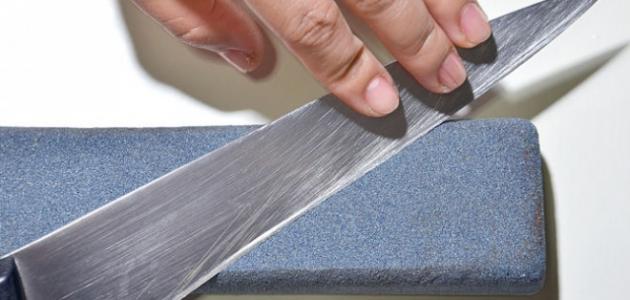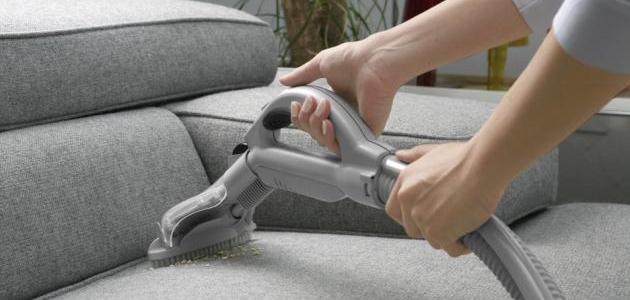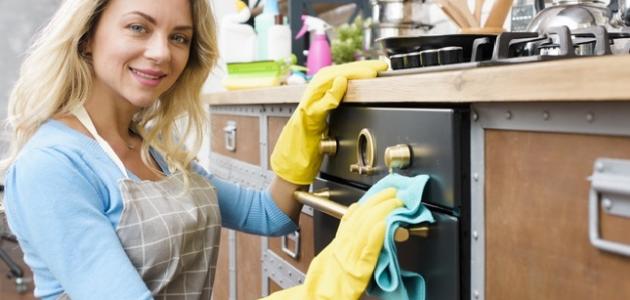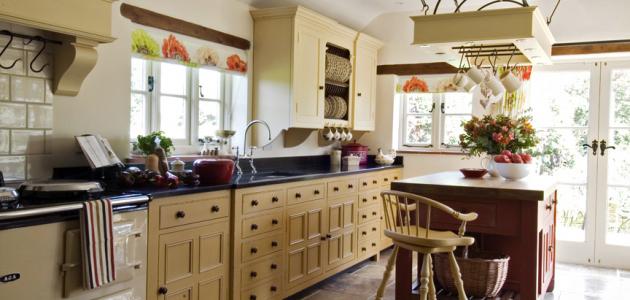Sharpen knives
Knives are one of the basic kitchen equipment that cannot be dispensed with, and just like the rest of the cooking tools, they need care and attention, as with frequent use, cleaning, and poor storage sometimes, their edges may need to be maintained, as they become blunt, so it is difficult to cut them and use them with the required quality, Here, it must be taken care of and enacted regularly, using many home methods that will be clarified and its steps explained in this article.
Methods of sharpening knives
There are many ways in which knives can be sharpened and spent, including the following:
Sharpen the knife with a whetstone
A sharpening stone is one of the effective home methods that restore and maintain the sharpness of the edges of knives, and it is used by following the following steps:
- A damp cloth is placed under the stone on the table in the kitchen; To prevent it from slipping, then a sharpening stone is placed on top of it so that the rough side is at the top, and the fine side is at the bottom.
- The handle of the knife is held by one hand, its edge is placed on the coarse whetstone with the other hand, and the knife blade on the whetstone is fixed at an angle of 22 degrees.
- The blade is pressed against the whetstone and pulled forward longitudinally, and along the stone, while maintaining a constant 22° angle.
- The previous process is repeated while keeping the angle constant, and 10 consecutive strokes are drawn on the grindstone.
- The knife is turned over to the other side, and the same steps are repeated 10 consecutive strokes as well.
- The grinding stone is turned over on the smooth surface, and the knife blades are passed over it on both sides 10 times, repeating for each side.
- The steel bar can be used to hone the edges of the knife after you have finished honing it with the stone.
- The knife is rinsed and cleaned well to remove excess and metallic particles stuck to its edges, dried and stored well to preserve it.
Sharpen a knife with a coffee cup
Knives can be sharpened and their edges sharpened again with a coffee cup made of ceramic, as its bottom forms a rough and strong surface that satisfies the purpose and gives good results, by following the following steps:
Read also:How to clean chamois sofas- The ceramic coffee mug is placed on the table upside down] with the bottom up in the air.
- The knife is held from its grip, and its blade is placed on the bottom of the inverted cup at an angle of 20 degrees, then the blade is passed over the grains of gravel on its bottom several times in a row.
- The knife is turned on the second side, and the previous step is repeated so that the blade passes at an angle of 20 degrees on the bottom grains several times in a row as well.
- The knife is alternately sharpened on both sides in the same previous step, with a stroke rate for each face, repeated 3-4 times.
- The knife blade is polished using the steel honing rod; To remove bumps and cavities on its edge, if any, by making 6-8 quick strokes on both sides.
Sanding with sandpaper
Sandpaper, also known as sandpaper, is used to sharpen knives and make them sharp, through the following method:
- A piece of wood or brick is covered with sandpaper to make it easier to use.
- Hold the knife straight and move in a circular manner on the sandpaper for a sufficient period of time.
- The knife turns on the other side, and the previous step is repeated for the same time.
- The angle of 22 degrees can be used instead of the circular motion, by making successive strokes on each face while maintaining an angle of 22 degrees between the knife and the paper, in addition to avoiding pressing it hard while sharpening it.
The steel rod for sharpening the knife
Knives are sharpened using the solid steel rod, by following the following steps:
Read also:Types of marble kitchens- The steel rod is held in its fist, and its end is placed on the table, or on a surface that does not prevent slipping, in a vertical manner, and it is well fixed.
- The knife is held by its grip as well, and the lower part of its blade is placed on the edge of the steel bar at the top at its handle, then it is sharpened downward at an acute angle of 20-30 degrees.
- The blade of the knife slides from the top of the steel bar to the bottom in the form of soft strokes, so that the tip of the knife ends at the head of the steel bar, and its tooth is taken into account smoothly without the use of violence.
- The knife is turned over on the second side of its blade, the previous step is repeated, and its sharpening continues in the form of strokes, while changing the edge of the steel handle and swapping it on both sides as well.
- The time used for sharpening depends on the condition of the edges of the knife blade, and how hard they are, and the sharpening is repeated until sharp edges are reached and suitable for cutting and use.
- Wipe the sharp edges of the knife after you have finished sharpening it with a paper towel. To remove the remnants of metal filings caused by the friction of the metal with the steel bar.
Knife care tips
Knives need special care to maintain the sharpness of their blades, and to facilitate their use, as taking care of them and their safety is one of the basics of cooking, and therefore it is recommended to follow the following instructions to preserve them, namely:
- Learn to use knives in the correct way, which guarantees the safety of the chef and the knife, and this includes choosing the appropriate knife; To avoid damaging the blades when used for an inappropriate purpose, for example, there is a knife for slicing bread, another for meat, and others for vegetables, in addition to using them correctly when cutting; To avoid injury to the chef's hands.
- Avoid using damaged knives with blunt blades, as they require great effort in pressing them in order to cut the materials, in addition to the possibility of slipping, and thus harming the chef.
- Washing and cleaning the knives well, avoiding placing them in the dishwasher, then drying them using a clean cloth on both sides of the blade, and wiping the handle to avoid exposing them to rust.
- Making sure to use surfaces and cutting boards made of suitable materials that are not hard or harsh on the edges of the knives when cutting on them and touching them constantly.
- Checking knives regularly, including all their parts, in addition to sharpening and checking the knife blade from time to time before using it; To facilitate slicing, reduce the effort required to press it, and prevent injury resulting from its smashing and weakness of its parts.
- Storing knives correctly, placing them in a safe place, in a rack, tray, or wooden piece of their own, or lifting them using a tape, or a magnetic board for knives that hangs on the wall, and making sure that they are kept out of the hands of children.









